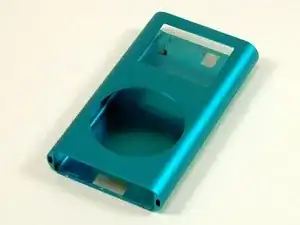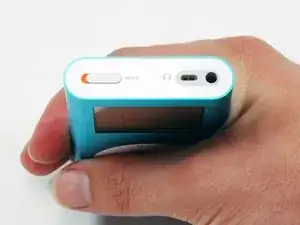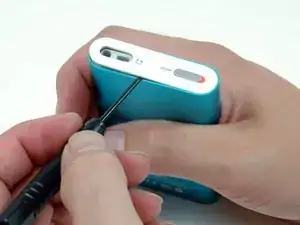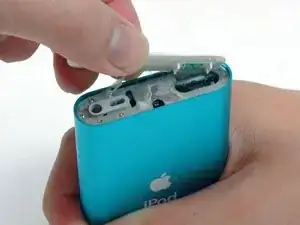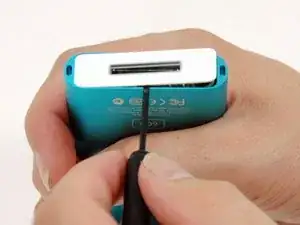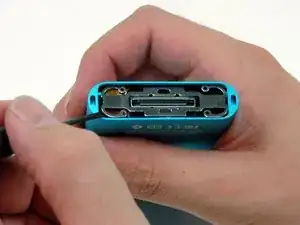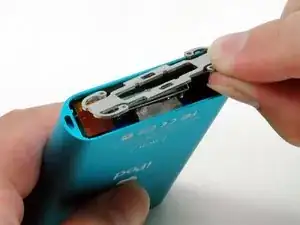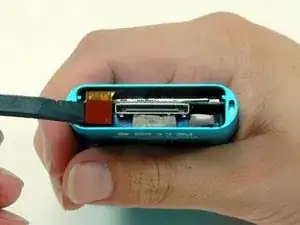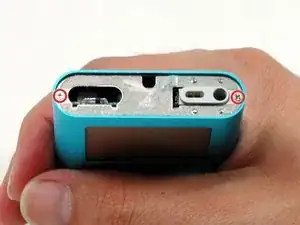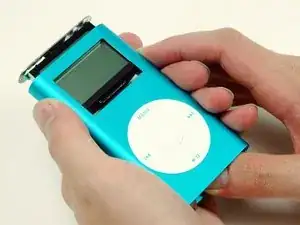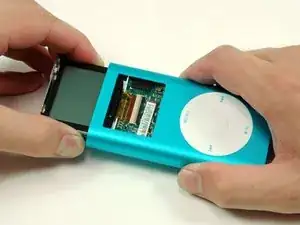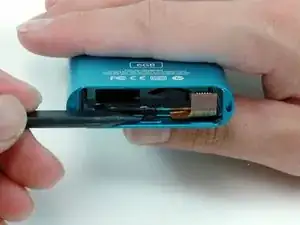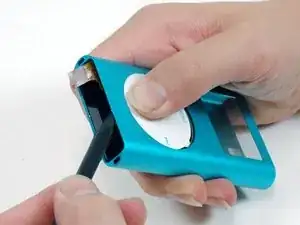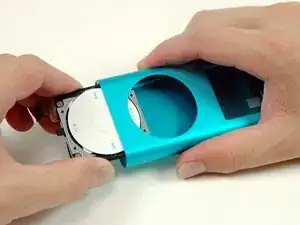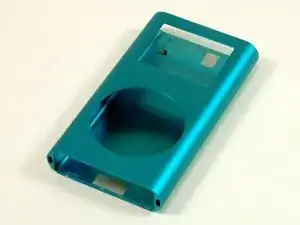Einleitung
Das farbige Metallgehäuse.
Werkzeuge
-
-
Setze vorsichtig einen kleinen Schlitzschraubendreher oder einen Jimmy zwischen das Metallgehäuse und die obere weiße Plastikabdeckung. Heble die obere weiße Plastikabdeckung mit den Schraubendreher ab. Passe darauf auf, dass du das weiche Plastik nicht mit dem Schraubendreher beschädigst.
-
Um das Lösen einfacher zu machen, kannst du mit einem Fön die Blender ein paar Sekunden lang leicht erwärmen.
-
-
-
Eine kleine Sprengringzange ist das beste Werkzeug, um die Metallhalterung zu entfernen.
-
Du kannst auch einen Schlitzschraubendreher benutzen, um die Metallhalterung wie gezeigt unter der unteren Blende zu lösen. Dücke dafür zuerst die Metallarme an den Ecken ein. Hebe dann die Halterung an.
-
-
-
Benutze einen Spudger oder deine Fingerspitze, um das orangefarbene Click Wheel Flachbandkabel vorsichtig aus dem Stecker zu lösen.
-
-
-
Entferne die beiden #00 Kreuzschlitzschrauben, mit denen der Kopfhöreranschluss am Gehäuse befestigt ist.
-
-
-
Schiebe den iPod vorsichtig aus seinem Gehäuse, indem du gegen das Logic Board nahe an der Unterkante des Click Wheel drückst.
-
-
-
Nachdem du das Logic Board ausreichend herausgeschoben hast, kannst du das Logic Board vorsichtig auf beiden Seiten des Displays greifen und den iPod aus seinem Gehäuse herausziehen.
-
-
-
Benutze einen Spudger um das kleine schwarze Plastikteil zurückziehen, welches das Click Wheel festhält.
-
-
-
Ziehe das schwarze Plastikteil weiter zurück und benutze deine andere Hand, um auf das Click Wheel zu drücken. Schiebe dann das Click Wheel aus dem Gehäuse.
-
Um den iPod wieder zusammenzubauen, folge den Anleitungen in der umgekehrten Reihenfolge.
3 Kommentare
Followed your instructions to the letter. Put it back together and now it won't work . Thanks for breaking my iPod mini.
You probably &&^&@@ something up by mistake. Don’t blame the author for your own mistakes.
dude the pod mini is an mp3 player from 2005 it literally does not matter, plus, you probably &&^&@@ up the repair anyways
